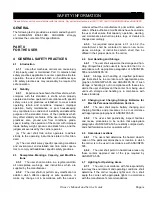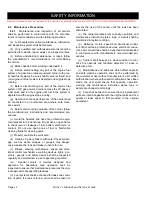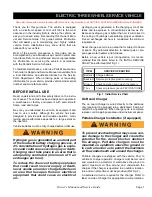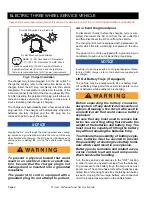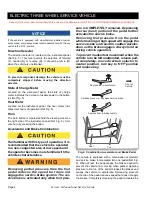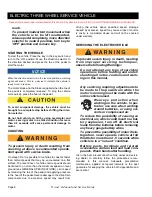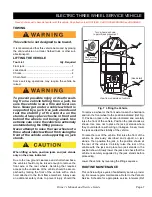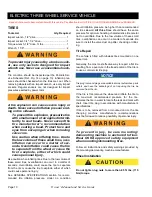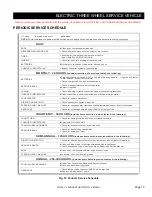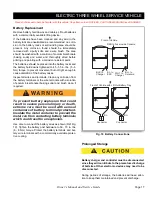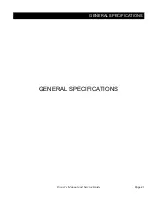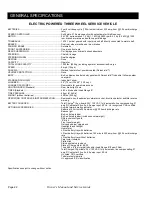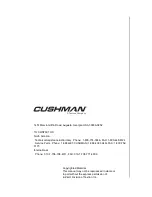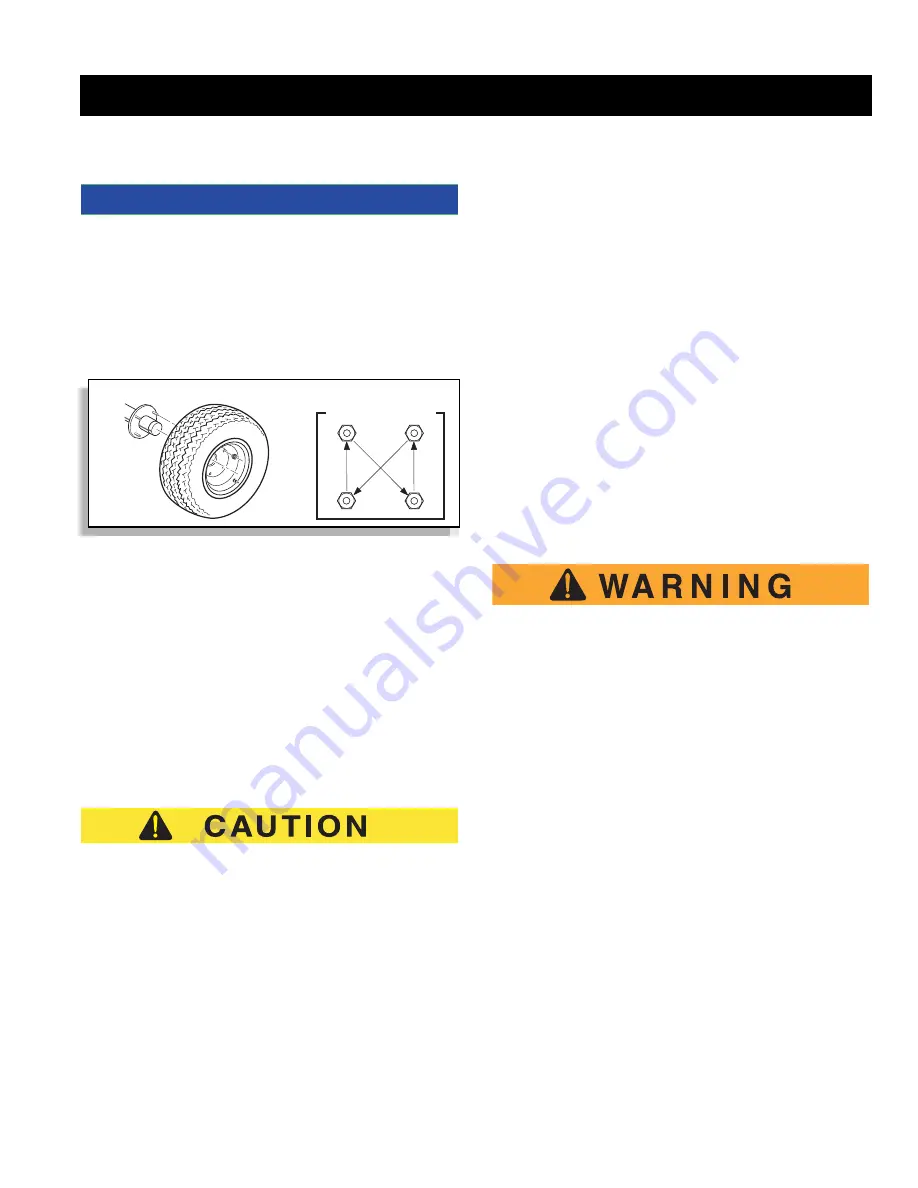
ELECTRIC THREE WHEEL SERVICE VEHICLE
Page 11
Owner’s Manual and Service Guide
Read all of manual to become familiar with this vehicle. Pay attention to all NOTICES, CAUTIONS,WARNINGS and DANGERS.
It is important to follow the ‘cross sequence’ pattern when
installing lug nuts. This will assure even seating of the wheel
against the hub.
With the valve stem to the outside, mount the wheel onto
the hub with lug nuts. Finger tighten lug nuts in a ‘cross
sequence’ pattern (Ref Fig. 11). Then, tighten lug nuts to
50 - 85 ft. lbs. (70 - 115 Nm) torque in 20 ft. lbs. (30 Nm)
increments following the same ‘cross sequence’ pattern.
LIGHT BULB REPLACEMENT
To replace the headlight bulb, pivot the headlight forward
and remove the two Phillips head screws from back side
and separate light assembly. Place new light bulb in
place and secure with screws previously removed.
To replace the taillight bulb, remove hardware securing
lens and remove lens. Install replacement bulb.
CARE AND CLEANING OF THE
VEHICLE
To prevent cosmetic damage, do not use any abra-
sive or reactive solvents to clean plastic parts.
It is important that proper techniques and cleaning mate-
rials be used.
Normal cleaning of the vinyl backrest and plastic or rub-
ber trim requires the use of a mild soap solution applied
with a sponge or soft brush and wipe with a damp cloth.
Removal of oil, tar, asphalt, shoe polish, etc. will require
the use of a commercially available vinyl/rubber cleaner.
The painted surfaces of the vehicle provide attractive
appearance and durable protection. Frequent washing
with lukewarm or cold water is the best method of pre-
serving the painted surfaces.
Do not use hot water, strong soap or harsh chemical
detergents.
Rubber parts should be cleaned with nonabrasive house-
hold cleaner.
Occasional cleaning and waxing with nonabrasive prod-
ucts designed for ‘clear coat’ automotive finishes will
enhance the appearance and durability of the painted
surfaces.
Corrosive materials used for dust control can collect on
the underbody of the vehicle. These materials will accel-
erate corrosion of underbody parts. It is recommended
that the underbody be flushed occasionally with plain
water. Thoroughly clean any areas where mud or other
debris can collect. Sediment packed in closed areas
should be loosened to ease its removal, taking care not
to chip or otherwise damage paint.
TRAILERING
To prevent personal injury to occupants of
other highway vehicles, be sure that the
v e h i c l e a n d c o n t e n t s a r e a d e q u a t e l y
secured to trailer.
Do not ride on vehicle being trailered.
Always check that the vehicle and contents are ade-
quately secured before trailering the vehicle. The rated
capacity of the trailer must exceed the weight of the vehi-
cle and load plus 400 pounds (see GENERAL SPECIFI-
CATIONS section for vehicle weight). Secure the vehicle
to the trailer using ratchet tie downs.
HARDWARE
Periodically, the vehicle should be inspected for loose
fasteners. Fasteners should be tightened in accordance
with the Torque Specifications table (Ref Fig. 13). Use
care when tightening fasteners and refer to the Techni-
cian’s Repair and Service Manual for specific torque val-
ues.
Generally, two grades of hardware are used in the vehi-
cle. Grade 5 hardware can be identified by the three
marks on the hexagonal head. Unmarked hardware is
Grade 2 (Ref Fig. 12).
Fig. 11 Wheel Installation
NOTICE
Tire style
may vary
1
2
3
4
'Cross Sequence'

